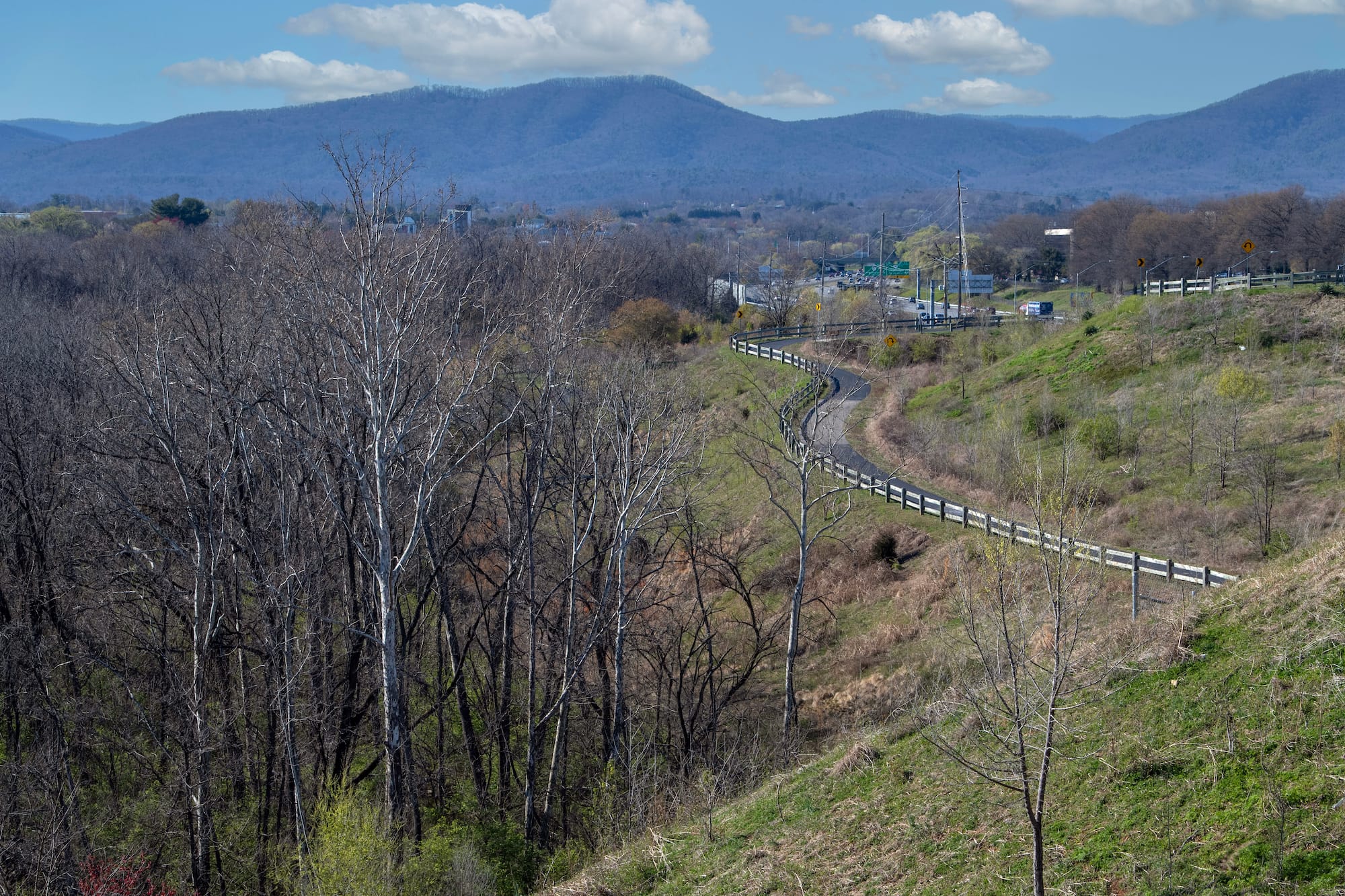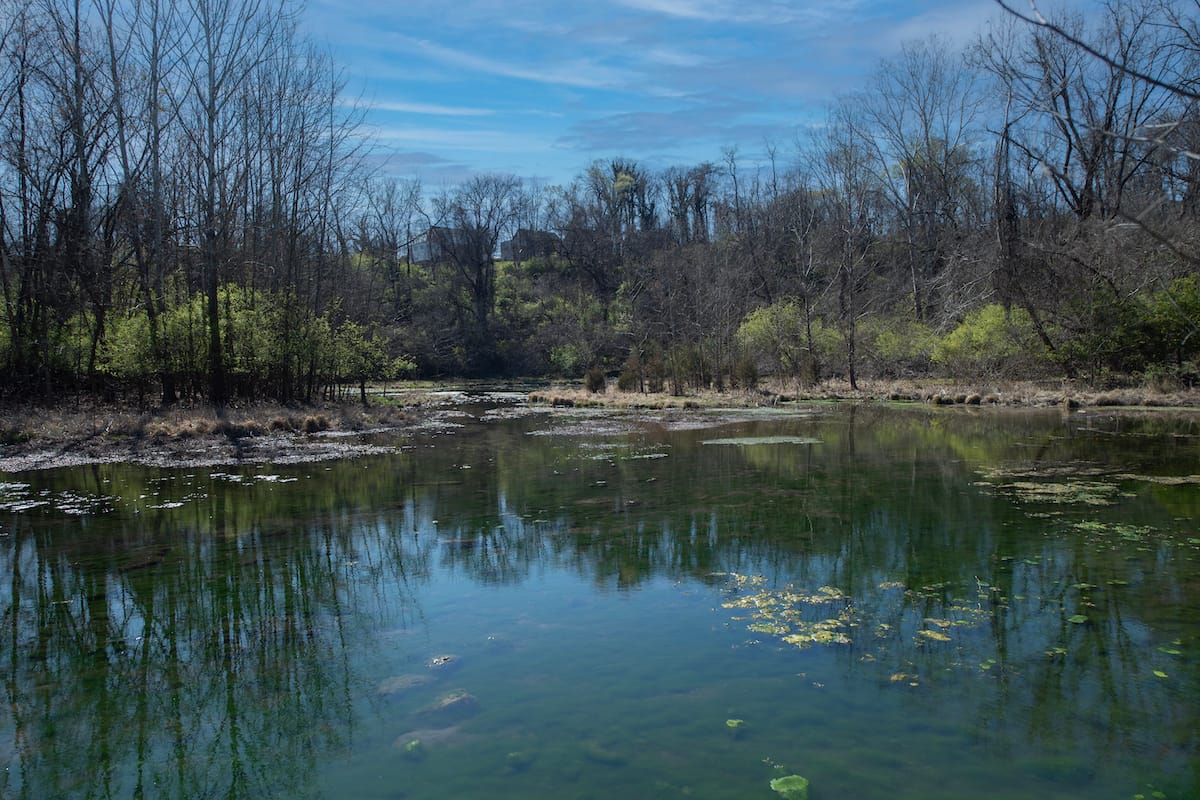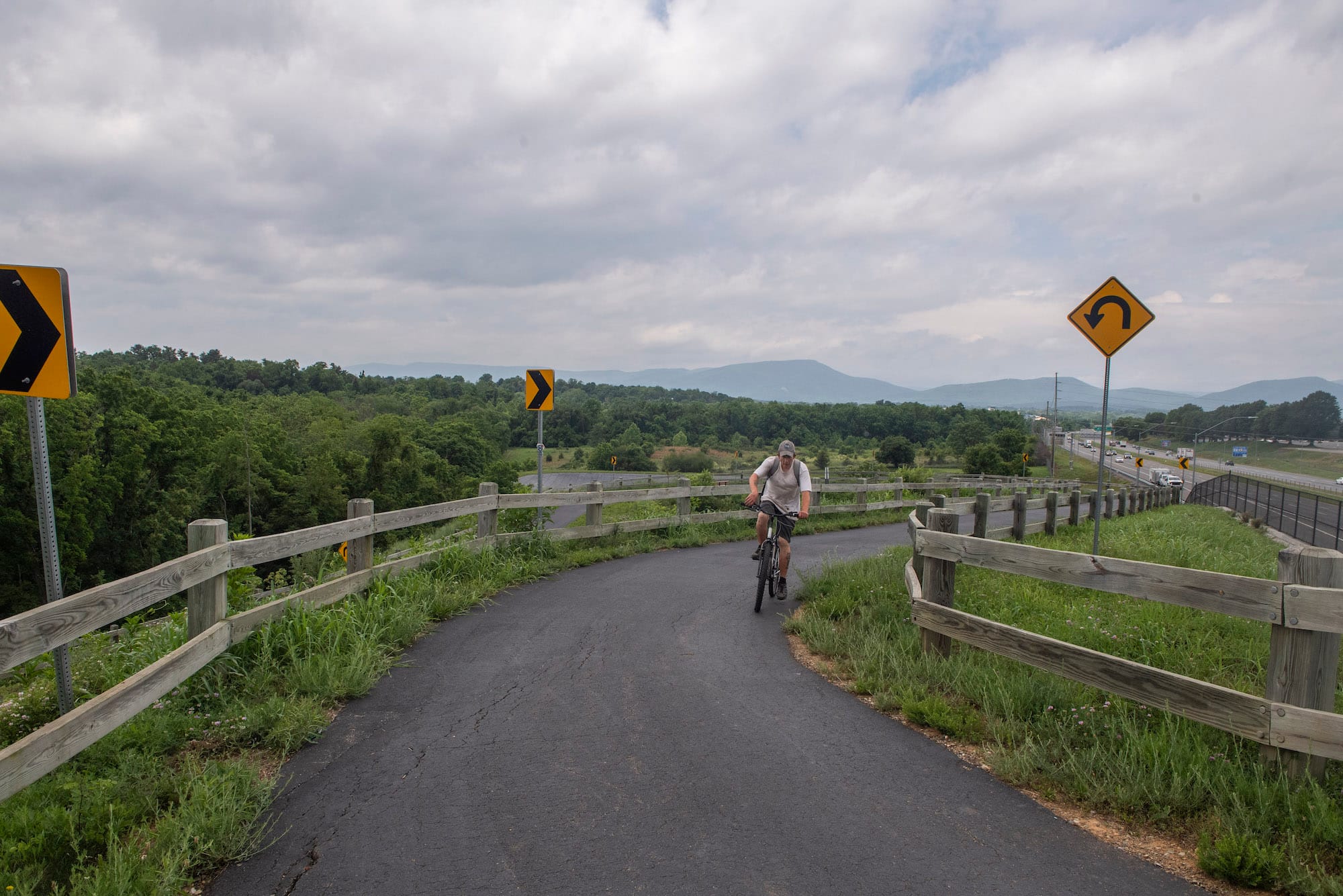Bridge from Highway Key To Developing Evans Spring, Consultant Tells Roanoke
Big box and medium-sized retail stores would also be crucial to making any development economically worthwhile, consultants say.

Development of Roanoke’s Evans Spring area could hinge on cobbling together at least $55 million for a highway interchange bridge connecting part of the land to Valley View Mall.
Bill Mechnick, president of a firm devising a master plan for the 150 acres of woodlands, told Roanoke City Council on Monday that a road spanning Lick Run would be crucial to making a concept plan a reality.
“Without the interchange, the development potential of the site … is obviously severely diminished,” he said, adding that there’s a 70- to 80-foot change in grade from the road to the creek. “Pretty remarkable piece of infrastructure that we would need to have.”
Roanoke leaders want to see the privately-owned land become a place to live and shop. But for decades neighboring residents have fought against any development.
Opposition encompasses concerns related to traffic, the environment and to racial justice. Evans Spring abuts three predominantly Black neighborhoods, and some residents see the push for development as a modern-day version of urban renewal, which decimated the community last century.
Mechnick, president of Land Planning and Design Associates, Inc., gave Council on Monday a final update on the master plan, which will be finalized in the coming weeks.
The master plan is not a development plan. Rather, it’s meant to help any potential developer understand what kind of project would fly — both in the marketplace and through local government approval. Last year, the city, Roanoke’s Economic Development Authority and the property owners agreed to spend up to $225,000 for such a plan.
Consultants have said Evans Spring would be well suited for a mix of homes and businesses.
Big box and medium-sized retail stores would be a key component to making any development economically worthwhile, according to Mechnick. A ramp from Valley View Boulevard at Interstate 581 would only connect to two commercial areas, which include thousands of parking spaces, according to a concept plan.
A separate residential area would be accessible from the surrounding Melrose-Rugby, Fairland and Villa Heights neighborhoods, the plan shows.
Consultants believe Evans Spring could host more than 600 residences — which could include a mix of townhomes, standalone houses and apartment units.
The concept plan lists 570,000 square feet of commercial space, which could also include a hotel, restaurants and space for entrepreneurs.
Consultant RKG Associates, an economic planning firm, estimated that by 2043 a major development as described in the master plan would generate $77 million in tax revenue. Over that same time, the city would incur about $19 million in expenses, leaving a net of $58 million.
A large development could directly employ more than 1,300 people, consultants said. And a major project’s total economic output — which includes people’s wages, direct spending on construction and various indirect spending over 20 years — could total $2.9 billion, according to Russell Archambault, a principal at RKG.
“That’s a huge amount of money in this area,” Councilwoman Trish White-Boyd said.
Developing the site will require significant infrastructure investments. Private developer and government partnerships will be key to making any large-scale project feasible, according to the consultants.
“Without the city’s participation, it would be hard to make this plan work,” Mechnick said.

With the master plan nearly complete, the ball will soon be in City Council’s court.
“Two major decision points lie ahead if the property is to be developed according to the master plan,” a city website on Evans Spring states. “First, the properties would need to be rezoned by City Council. Second, there will need to be a funding strategy for the interchange connection to I-581, which is expected to exceed $50M.”
Chris Chittum, who leads the city’s planning department, said there is no set deadline on when Council will act. He acknowledged properties are “rarely if never” rezoned before an actual developer gets involved, but nothing prevents the property owners from seeking a rezoning.
City Manager Bob Cowell said the city could not rely on state funding to build the highway ramp. But the hope is that a mix of state, local and private developer dollars could do the job.
“We would certainly make an argument to VDOT that they left us with a partially completed interchange,” Cowell said, referring to the Virginia Department of Transportation.
(In 2017, VDOT added an off-ramp going south on 581 to the Valley View interchange, to the tune of nearly $64 million, according to spokesman Jason Bond.)
Despite city leaders’ eagerness, residents who have attended community forums on Evans Spring have expressed near unanimous opposition to any sort of development.
Friends of Evans Spring, a group of neighboring residents and community activists, has called on the city to acquire the properties and turn it into parkland.
They want to see Roanoke “create a publicly accessible park and greenspace to protect nearby neighborhoods from extreme urban heat and reduce stormwater flooding that endangers downstream homes and businesses,” in the words of an online petition that has garnered 322 signatures from Roanoke residents.
“Roanoke has a glut of underutilized and vacant commercial and industrial areas - and the accompanying concrete and asphalt that traps heat and contributes to stormwater runoff,” the group says. “We do not want or need more unnecessary, irresponsible development that degrades our environment and lowers our quality of life.”



David Perry, executive director of the Blue Ridge Land Conservancy, said the city should take “careful consideration” before any development on the land. He wrote in a letter to city leaders this month that development could negatively impact water quality and wildlife as well as exacerbate the city’s urban heat island effect.
Cowell noted that current city policies call for a mix of residential and commercial development at Evans Spring.
“There is no policy that says ‘keep this open space,’” he said.
Councilwoman Stephanie Moon Reynolds said while some residents have a “tunnel vision” that the city should buy the land for use as a park, other options exist.
“They said, ‘the city could buy,’” Moon Reynolds said. “This opens the door for someone like this organization [the land conservancy], if they wanted to buy.”
“Sure,” Cowell responded. “The city could buy this property, the private developers could buy this property, the land conservancy could buy this property.”
While the Evans Spring land is privately owned, some residents see the city’s role in helping usher development to the area as an echo of urban renewal.
Several families in the mostly Black neighborhoods around Evans Spring relocated there after the city used eminent domain in the 20th century to seize homes in Northeast Roanoke.
Beginning in the 1950s, the city paid pennies on the dollar for Black families’ homes, bulldozed them and ran a highway through the city. Thousands of families were uprooted and forced to move.
At a talk Sunday at the Taubman Museum of Art, curators highlighted the work of the late artist David Ramey, who made hundreds of drawings of the Gainsboro neighborhood as it appeared before urban renewal.
During the audience question-and-answer period, multiple attendees brought up Evans Spring, saying they believed history risked repeating itself.

